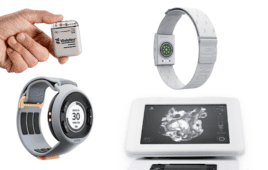Companies need to move rapidly to take advantage of developing trends in healthcare treatment modalities. This article examines many of the factors combination product manufacturers need to consider to accelerate their product’s time to market.
By Christine Ford
Truly innovative products can improve the effectiveness of medical therapies, help to achieve efficiencies, and thus become part of sustainable solutions to health care challenges. In particular, there are significant opportunities for companies to take advantage of with an emerging trend—the convergence of pharmaceuticals and medical devices in combination products. Often without the expertise to develop their own drugs, many medical device OEMs are seeking partnership and licensing opportunities with pharmaceutical companies or hiring pharma experts.
Benefits of Combination Products
Combination products are comprised of two or more regulated components—drugs, medical devices, or biologics—combined through physical or chemical means. These include drug-coated devices, drugs packaged with delivery devices in medical kits, and drugs and devices packaged separately but intended to be used together. Many such products bring together the power of advanced therapeutics with the precision dosing made possible by sophisticated delivery technologies.
|
The next-generation Medtronic Endeavor drug-eluting coronary stent system combines the anti-restenosis drug Zotarolimus with PC Polymer. In comprehensive clinical trials Endeavor has demonstrated proven deliverability, efficacy and safety. (Investigational device not approved by the FDA for use in the U.S.) (Photo: Medtronic) |
Already valued at $5.4 billion in 2004, the global market for combination products is achieving annual growth of 10% to 14% a year.1 One of the most commercially successful combination products has been the drug-eluting stent. Combination products are also being marketed or developed for orthopedics (e.g., protein-coated implants to encourage bone regeneration), cancer (e.g., a tumor ablation system), infection control (e.g., surgical mesh with antibiotic coating), and diabetes care (e.g., inhaled insulin, as well as an integrated glucose meter and insulin pump).
The first transdermal patch for use in treating depression, Emsam, has just been approved by the Food and Drug Administration (FDA). At its lowest dosage, it can be used without the dietary restrictions needed for oral drugs in the same therapeutic class. Also recently approved by the FDA, Exubera, an inhalant insulin product that holds great promise for treating diabetes. Future combination product applications are expected to include implantable, closed-loop insulin pumps, steroid-eluting electrodes, or even novel “physical solutions,” such as drug-coated surgical screws, catheters, sutures, and wire.
Developing a Convergence Strategy
Combining previously distinct product offerings—pharmaceuticals, medical devices, and diagnostics—can create openings in a crowded marketplace for truly exceptional products. But in developing a convergence strategy, it’s important to follow certain best practices to meet the challenges of product development and regulatory approval.
First, it’s crucial to have a clear understanding of the sales opportunities and potential value of combining previously distinct products or technologies. Are there new therapeutic processes or advancing technologies that set the stage for a combination product?
| The LidoSite System is a topical anesthetic | ||
| system that delivers Lidocaine with Epinephrine at the injection site quickly, safely, and effectively. (Photo: Vyteris Holdings Inc. and B. Braun USA) | ||
A successful convergence strategy is likely to be an outgrowth of a company’s core business. Developing combination products can, for example, help pharmaceutical manufacturers exploit the full potential of their drugs—and potentially extend the patent lifecycles of their products. For medical device companies, combination products can be the edge needed to expand their market share.
Consulting With Users
In developing products, it’s crucial to consult with end users. Today’s doctors face a bewildering range of choices, from novel clinical therapies to new methods of delivering care. At the same time, cost pressures and a more stringent reporting climate are placing constraints on their time and behavior. When developing and marketing combination products, it’s important to consider how the tools might provide efficiencies through reduced labor or costs, or help to ensure patient safety.
Careful market research and testing among patients and health care professionals can point out flaws in current therapies and pinpoint areas ripe for innovation. Physician Advisory Boards and input from leading medical societies are a tremendous resource for innovation and feedback.
Outsourcing to Speed Development
More and more firms are discovering the benefits of outsourcing to streamline product development, and not just in the traditional avenues of manufacturing and labor. For combination products, outside engineering and design firms can provide end-to-end solutions—from research and product development through to equipment design and testing—speeding time to market and potentially lowering costs.
Contrary to popular belief, outsourcing can actually help to preserve trade secrets. A third-party firm can provide stronger protection for a company’s proprietary position than would internal development. By preserving anonymity—no one needs to know the companies used—outsourcing can reduce the threat of competitors poaching valued employees. Of course, it’s good practice to ask design firms to sign confidentiality agreements, protecting intellectual property and providing competitive exclusivity.
Outsourcing can also help maintain project timelines and control costs, thus minimizing the effect of competing internal processes and keeping a team focused on a single goal. During the contracting process, it’s important to hold third-party contractors to clear time and cost specifications and require periodic reports of progress. In addition, when selecting an outsourcing vendor for combination product development, it is critical that such firms understand the unique requirements of combining pharmaceutical, biologic, and/or device components as related to sterilization, lyophilization, and other unique manufacturing considerations.
Forging Partnerships as a Growth Strategy
It’s not likely that expertise in all aspects of pharmaceutical development, analytical skills, medical device engineering, quality control, and delivery systems will be housed in a single company. Strategic partnerships can bring together the multidisciplinary expertise needed for combination products, thus helping to bridge the divide between a good idea and a successful product.
Partner companies can offer fresh approaches and the benefits of experience to the development of combination products. For example, some partners might have foresight and market research about emerging opportunities, while others might have particular knowledge of legal and regulatory requirements.
Navigating FDA Approval
Not surprisingly, there’s a great deal of uncertainty about the regulation of combination products. Drugs, devices, and biological products each have their own types of FDA applications, good manufacturing practice regulations, and adverse event reporting requirements.
Wisely, the FDA has recognized that “one-size-fits-all” will not work for regulation of combination products, which are quite diverse in their design and application. Former FDA Commissioner Mark D. McClellan, M.D. Ph.D. said, “FDA is prepared to meet the new opportunities of combination products by adapting its resources to address these new technologies.” Since December 2002, the FDA’s Office of Combination Products (OCP) has overseen combination product regulation. The actual regulatory responsibility lies in FDA’s drug, device, and biologics centers: the Center for Drug Evaluation and Research, the Center for Devices and Radiological Health, and the Center for Biologics Evaluation and Research.
To begin the process, applicants submit a “Request for Designation” to the OCP, which then has 60 days to assign the combination product to one or more of the centers. To ensure timely review, it’s a good idea to consult with OCP staff about the appropriate regulatory pathway. Assignments are based on a determination of the “primary mode of action” (PMOA) of the product, defined by the FDA as “the single mode of action of a combination product that provides the most important therapeutic action.” In cases where the primary mode of action is unclear, assignments are made based on determinations for similar products and relevant experience at the centers.
The OCP has not yet stipulated Good Manufacturing Practices for combination products. Because of the breadth, innovation, and complexity of combination products, there is no single developmental paradigm appropriate for all combination products. For combination products produced as a single entity or packaged together, both Current Good Manufacturing Practice (cGMP) regulations for pharmaceuticals or drug products and Quality System (QS) regulations for medical devices are applicable. Biological product regulations also might apply.
It is generally not necessary for manufacturers of combination products to maintain separate manufacturing systems to ensure compliance. Recognizing that there is a great deal of overlap among the regulations, the FDA has said that compliance can generally be achieved by using a hybrid approach that draws upon both the cGMP and QS regulations. However, new scientific and technical issues may emerge when the drug and device are combined or used together. When combining products that are traditionally developed using different regulatory paradigms, the interaction of the drug, biologic, and device constituents may not be readily apparent.
A new guidance document—released this past September—from the FDA addresses the types of scientific and technical data that may be needed to establish the safety and efficacy of novel combination products. The document, titled “Early Development Considerations for Innovative Combination Products” presents general questions that companies should consider as they plan their preclinical studies.Manufacturers should not assume that their usual processes will satisfy what are, after all, still-evolving requirements. To avoid surprises, it’s recommended that manufacturers discuss their plans with the FDA at an early stage. Browsing the OCP website, which includes 140 examples of approved combination products, will provide a sense of the review processes thus far.
Capitalizing on Innovation
Many experts predict that combination products will transform the medical industry and hold great promise for advancing patient care. It’s likely that they will fuel greater competition as well as collaboration—as formerly separate players become competitors and/or partners. But in addition to presenting challenges in design, production, and approval processes, combination products offer exciting, unique opportunities. Even if they do not intend to enter this field for some time, manufacturers can benefit by creating a convergence plan and exploring the tools and partners needed to realize it.
REFERENCES
ONLINE
For additional information on the technologies and products discussed in this article, see the following websites:
Christine Ford is the event director for PharmaMedDevice—an event focused specifically on combination products and co-located with the Interphex show. Since joining Reed Exhibitions in 1991, she has been involved in a variety of conference and event management positions within a range of event portfolios including technology, life sciences, entertainment, manufacturing, and real estate. Ford served as Reed Exhibitions’ director of business development from 2000 to 2005, working on a variety of launch and acquisition projects. She can be reached at 203-840-5391 or cford@reedexpo.com.




